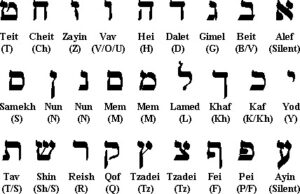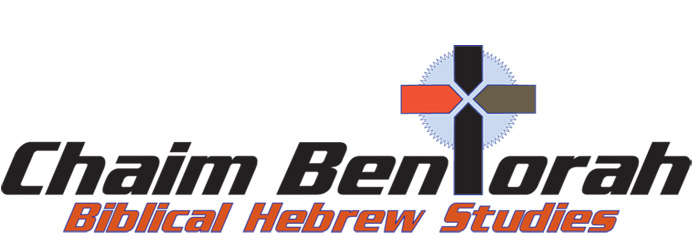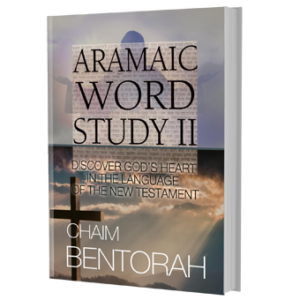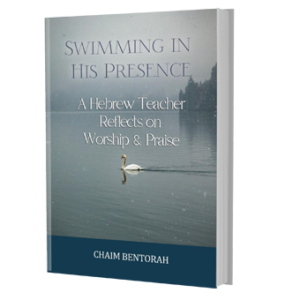Hebrew Word Study – Return – Shuvah – שׁוּבָ֣ה Shin Vav Beth Hei
Numbers 10:35-36: “Whenever the ark set out, Moses said: ‘Arise O’Lord let the enemy be scattered, may your foes flee before you.’ Whenever it came to rest, he said: ‘Return Lord to the countless thousands of Israel.”
 This passage is set off in the original Torah Scrolls with two inverted nuns. They appear in some Hebrew texts as rectangles or two nuns put together. It is referred by the Masorites and in our Hebrew grammar books as a nun hafucha. It is one of those points in grammar that you don’t readily forget as a student, mainly because it uses a hard H sound for the ch and pronounce it as a k. Many Hebrew teachers simply refer to this as an inverted nun when and if they actually teach about it. As the inverted nun is that common you may not have picked up on it in your Hebrew class. Like, I said, even if it was brought up your course of study. If you studied Hebrew under a Christian teacher he or she might have simply passed the inverted nun off as just an unimportant marking by Hebrew scribes. Actually there is some merit to this teaching as the inverted nun does not often appear in various Hebrew texts because it was considered just an unimportant marking by the Hebrew scribes.
This passage is set off in the original Torah Scrolls with two inverted nuns. They appear in some Hebrew texts as rectangles or two nuns put together. It is referred by the Masorites and in our Hebrew grammar books as a nun hafucha. It is one of those points in grammar that you don’t readily forget as a student, mainly because it uses a hard H sound for the ch and pronounce it as a k. Many Hebrew teachers simply refer to this as an inverted nun when and if they actually teach about it. As the inverted nun is that common you may not have picked up on it in your Hebrew class. Like, I said, even if it was brought up your course of study. If you studied Hebrew under a Christian teacher he or she might have simply passed the inverted nun off as just an unimportant marking by Hebrew scribes. Actually there is some merit to this teaching as the inverted nun does not often appear in various Hebrew texts because it was considered just an unimportant marking by the Hebrew scribes.
I know I studied under six different Hebrew teachers during my education in Bible College and seminary and I really don’t recall any discussion on the inverted nun. I tend to recall a couple of my Hebrew professors calling this, as other pointings and markings, as simple accent marks.
However, when I ran across this today I could not help but wonder why the inverted nun would be unimportant if the most ancient text show them. If it is there, then there must be an important reason behind it. Some rabbis, your more liberal rabbis, would say that it was an indication that the inspired nature of this text is in question. Other’s more generously say the inverted nun indicates that there is a question of the divine nature of these verses and the nuns set them off as verses to be questioned until Elijah returns to declare if these verses are inspired or not. Some feel the inverted nuns are used to indicate that this portion of Scripture is more important than others. Others simply pass them off as markings like the brackets we use in English.
Would you like Chaim Bentorah as your personal Hebrew teacher?
|
|
The explanation that I like and feel most comfortable with is the more common explanation by the orthodox rabbis and that is that this passage of Scripture is to be moved to be placed in another position in Scripture after the Messiah returns. In this case it is to be moved to a place after Numbers 17:2. It will then be its proper place in
Scripture. More, shall we say, mystical Rabbis will say that the two inverted nuns form a roof or a completion. By mystical I mean rabbis who believe you can actually have a personal one on one relationship with God. Such an idea was frowned upon and is even so today. I suppose by that definition you can define me as mystical and perhaps 90% of those who read my books as mystical.
Anyways these rabbis say that the 85 words in Numbers 10:35-36 actually form a separate book. The Talmud teaches there are 7 books to Torah, not five. They would even add another book, but that will not become a book until the Messiah returns. I am assuming the seventh book is the other place in Scripture where we find the inverted nuns which is in Psalms 107.
Such an idea creates a floating nature to Scripture, in other words the placement of a scripture verse can be moved by use of the inverted nun. In Christian theology we would call that or it would be similar to what we call ongoing prophecy. In other words a word of prophecy in the Old Testament may have a fulfillment in the time it was written but will also point to a future event as well. That abomination of desolation is one such on going prophecy. It has had multiple fulfillment starting with Antiochus Epiphanes who offered up a pig on the sacred altar in 168 B.C. and desecrated the temple of God. There is also a future event call the abomination of desolation to take place in the future.
Here we have the teaching of an event that took place in history and the use of the inverted nun to show that there will yet be a similar event to occur in the future when the Messiah returns. As we believe the Messiah has come in the form of Jesus we can claim this event over and over. Whenever the enemy approaches, and we are moving forward with the Lord as Israel moved forward carrying the ark with God presence that now rest in us thanks to the work of the Messiah Jesus, our enemies will arise and God will scatter the enemy.
When we rest in the presence of God He will return to us. The word return is shuvah which could come from the root word shuv which means to return. This, however, makes little sense in the context as God never left Israel when he scattered the enemy. For this reason I believe this root word is a play on the word shavah which means to take captive. God will not only arise and scatter our enemy, but he will take us as His captive. So long as we remain a captive or prisoner of God, the enemy can never touch us again. We are locked away in the prison of God’s heart.
Hi there! Thank you for reading this Daily Word Study. Can I ask a favor? Share this Daily Word Study with your friends on Facebook and Twitter by clicking one of the icons below.
Thanks & Blessings, it means a lot to me!







What a beautiful thought, being a ‘captive’ of God’s.
When a military force takes captives, they put immense effort into protecting those prisoners, albeit with threatening intentions.
Our God though puts immense effort into protecting us because He loves us so deeply. I count it an honor to be locked away in God’s heart.
Your idea of the floating nature of scripture is interesting to me because I am currently writing a book on spiritual understanding. Several years ago the Holy Spirit explained the nature of a prophetic word and its multiple layers of fulfillment using a plucked guitar string to demonstrate. Now, I didn’t grow up around musical instruments and so I really had to dig in to understand what He was showing me but the gist of it is that when a string is plucked it vibrates at a certain frequency (we call them hertz). Let’s say the full length of the string is vibrating at 110 hertz (110 cycles). If that is the case then each half of the string is vibrating at 220 and so on for each quarter and eighth. Each section being an integer of the original frequency. This is how sound waves work on a closed string. It is how prophecy (scripture) can have one main meaning and its fulfillment and multiple sub meanings and their fulfillment without compromising the integrity of each other.
Anyway, your floating scripture theory would line up with this example and I would love to talk to you about it more and possibly include our conversation in my book.
Thank you for this lesson!
Wow that’s a lot to take in. I read those two portions in a Messianic Bible and a
N Orthodox Bible written with both English and Hebrew. In both of these it said “your enemy” ( God’s enemy) not THE enemy. I don’t know if that makes a difference or not.
I tried to place that part of scripture were you said it would go ,but it didn’t make sense to me. Perhaps it will make sense when Messiah Jesus comes.
I hope that I don’t become too self centered as I sometimes do. I really want to make sure that I never mislead someone and back up what I say with Scripture. I also ask God in prayer to let me know if what I say is correct.
If I’m wrong I will confess my sin and correct my statement.